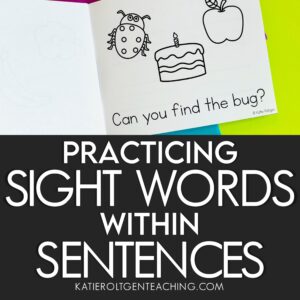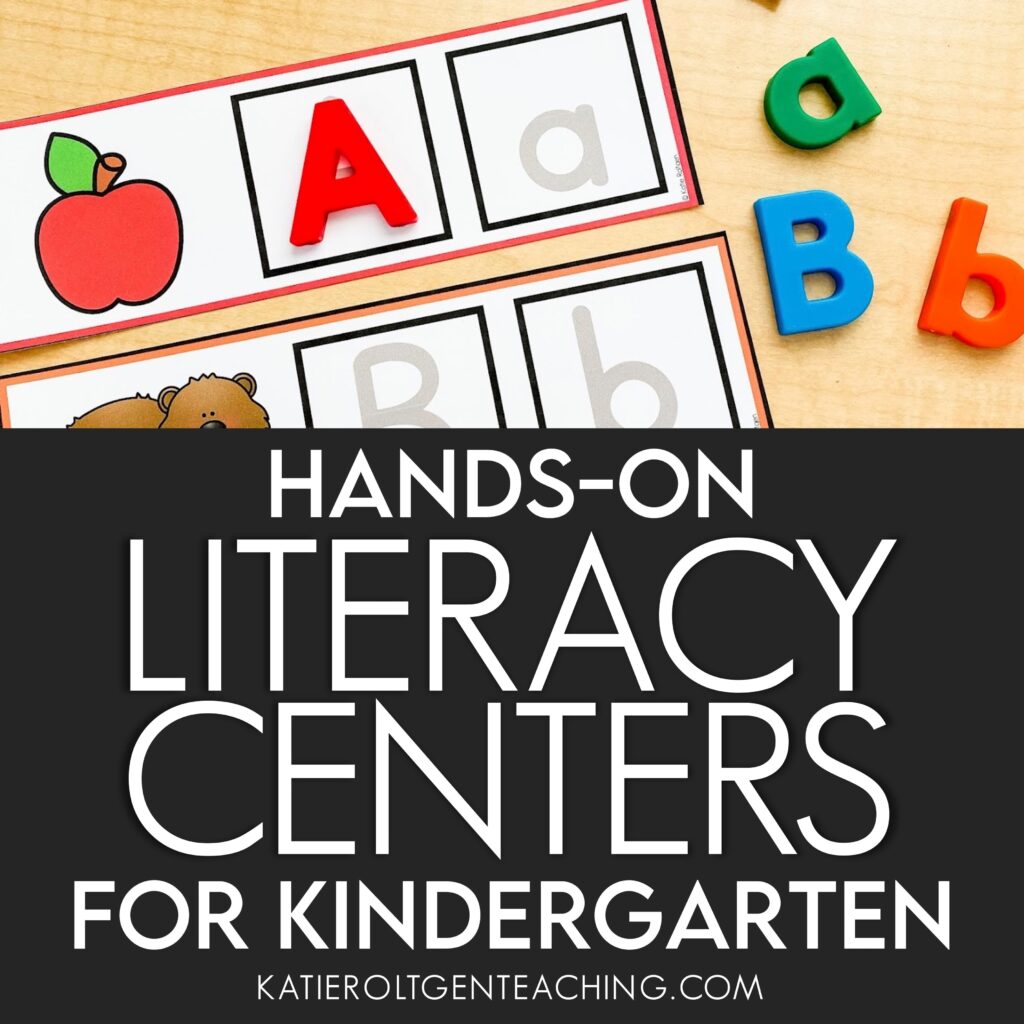
Menu
Research tells us that one of the most important components of phonics instruction is a hands-on approach. Hands-on activities provide motivational and tactile learning experiences that can be beneficial to students under the direction and supervision of their teacher.
This is why I always made it a goal in my kindergarten classroom to have literacy centers that were very hands-on, using lots of manipulatives. They were also meant to be super fun and engaging for students, allowing them to work independently.
Many of these hands-on center activities used plastic links, play dough, magnetic letters, clothespins or even just their fingers !

Kindergarten literacy centers are a time for teachers to work with a small group of students while the rest of the class works independently on their literacy skills. They are a great way to keep students engaged while working on different literacy skills that are part of the 5 components of reading.
There are 5 different components of reading. I will list them below and break each of them down. (This can also be referred to as the Science of Reading). What many people think of as the components of the science of reading are the skills and instructional methods that have actually been proven effective in teaching reading over decades now.
Understanding and effectively teaching the essential elements of reading is crucial for educators. It significantly improves the likelihood that your students will become proficient readers.
Phonemic awareness is the ability to recognize, play with and differentiate individual sounds (phonemes) within spoken words. Phonemic awareness is all about grasping that words are composed of distinct sounds and being able to listen to, blend, break apart and alter those sounds.
Studies have demonstrated that phonemic awareness instruction is most impactful when students are encouraged to manipulate phonemes alongside letters. It’s also really helpful to concentrate on just one or two ways to play around with sounds instead of giving kids too much to do at once.
Phonics is all about how letters match up with sounds in words. It’s knowing that ‘c’ says /k/ and ‘h’ says /h/, and using that to sound out words when reading and write them down when writing. Some people think reading is only about phonics, but it’s actually just one part of the big picture.
Studies prove that teaching phonics in a structured way helps new readers, struggling readers and those who find reading tough to get better at it more than other methods.
Fluency means reading text correctly, fast and with feeling. It’s about knowing words right away, understanding what you’re reading, and reading smoothly.
Research suggests that kids who read fluently do better in other parts of reading as well. That’s because fluency helps connect knowing words to understanding what they mean. So essentially, kids who are fluent readers will most likely be better at reading comprehension as well.
Vocabulary refers to the words students need to read and write. It’s about knowing what words mean and how to use them in different situations.
Reading comprehension is about understanding what you read and making sense of it. You use what you already know, figure out words, understand vocabulary and think carefully to understand what you’re reading.
I typically liked to have 5 centers in my kindergarten classroom that followed the components of reading above but you can choose more or less if you prefer. It’s really about what works for your needs and how many students you have.
I had 5 hands-on literacy centers that I changed out weekly. Students rotated between a small group with me, literacy centers and then an activity with a volunteer.
Literacy stations should be a time for you to do meaningful work with a small group of students. You can divide students into groups based on their ability or mix high and low readers in groups. I liked to keep small groups at 5 students or less.
The whole class participates in centers at this time. If students are not working with you for small group instruction, then they are at a literacy center working independently.
How long centers or stations should last will definitely depend on the amount of time that you have for your literacy block and the attention span of your students.
In my experience, 5 and 6 year old kindergarten students do best with 15-20 minute time blocks. It is a great place to start because it goes fast but is also enough time to keep kids engaged during this time without getting bored (which also means less behaviors occur!)
If you are organized for your small groups of students and have some low prep centers prepared, this is absolutely do-able. My biggest piece of advice would be to practice practice practice center rotations and train your students on this routine from the beginning of the school year.
In my classroom, while students worked independently at centers, they could choose their own center but they had to do all of the centers during the week. They each had a laminated centers tracker that they used to cross off the centers as they did them.
I used a hands-on literacy center system to give students an opportunity to work on many different reading skills during this time in a variety of ways.
Simply print the Hands-On Literacy Center Ideas and start using them right away in your classroom! The goal of these centers is to engage students in meaningful and enjoyable experiences that promote reading development.
This bundle is full of over 35 different literacy activities and ideas for centers that will keep your kinders engaged and keep their little hands busy!
What types of literacy activities are included?
Here are some other ideas for kindergarten centers during your ELA block:
Here, children can explore books independently or with a partner, practice reading aloud, and engage in activities related to comprehension and story retelling.
In this center, students can practice writing letters, words, and sentences using various materials such as paper, pencils, crayons and markers. They may also create stories, journals or other written pieces.
This center focuses on developing phonemic awareness and phonics skills through activities such as sorting letters and sounds, matching letters to sounds and practicing letter formation.
Children work on building their vocabulary, spelling, and sight word recognition through activities like word building, word puzzles and word games.
At this center, students listen to audio recordings of stories or instructions, followed by activities that reinforce listening comprehension skills and story recall.
Here, children explore letters of the alphabet through hands-on activities like letter tracing, letter matching and letter-sound correspondence games.
This center focuses on teaching high-frequency sight words through activities like sight word games, flashcards and reading practice.